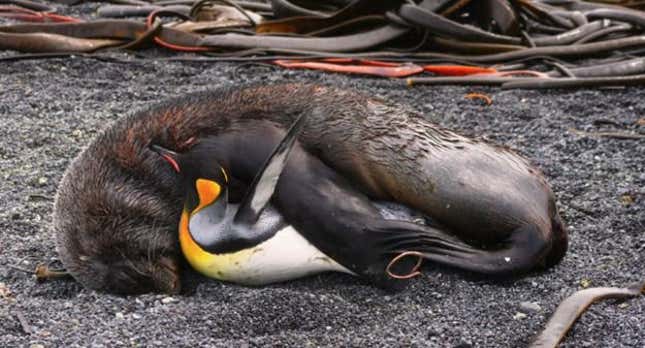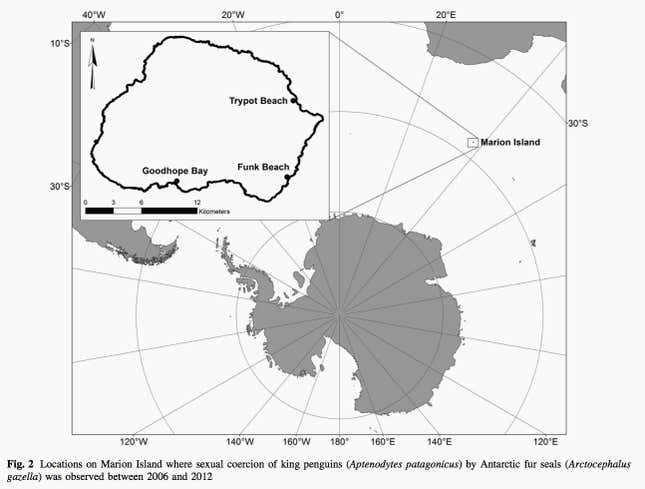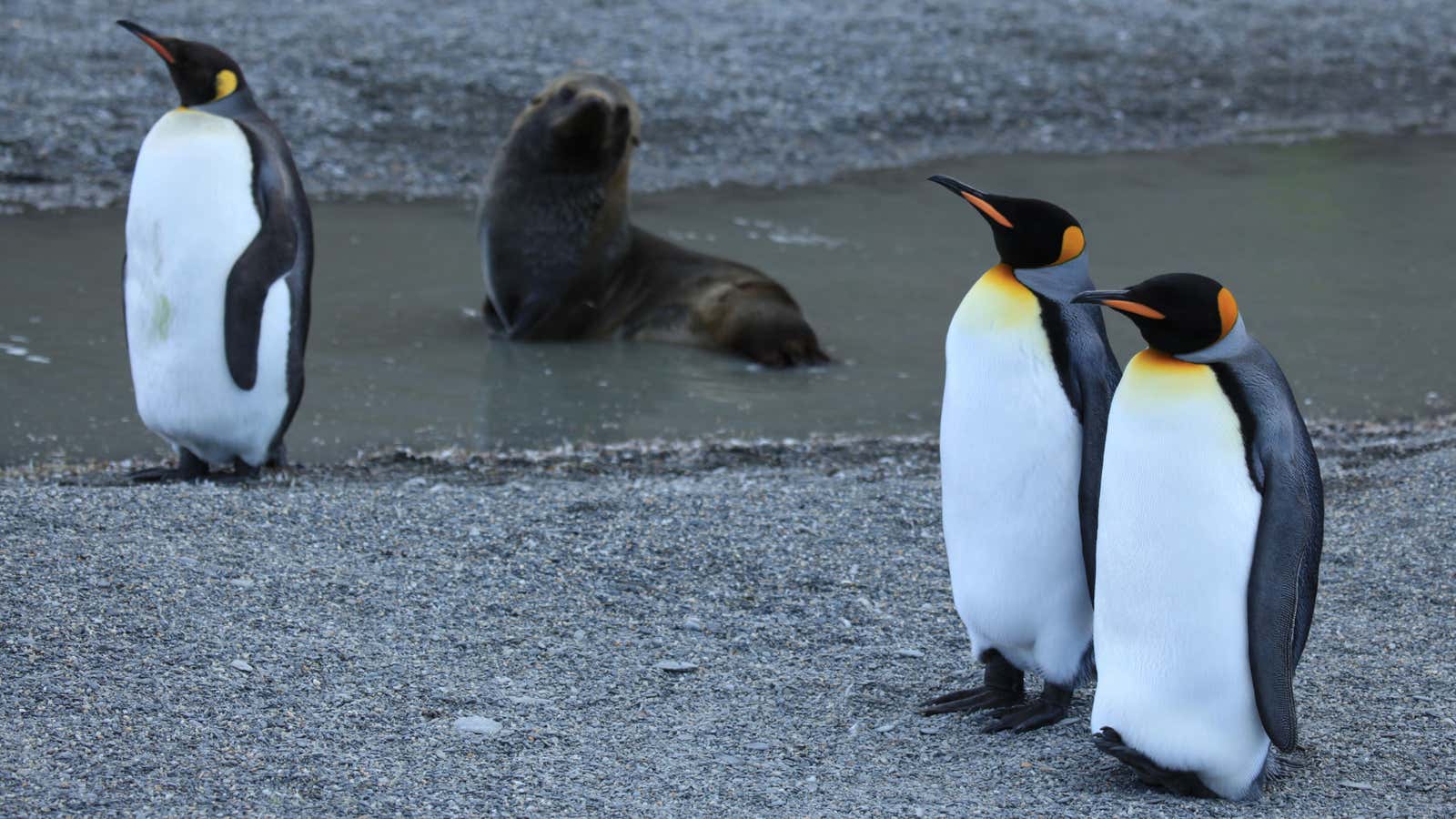Sex in the Animal Kingdom often ain’t pretty. Coercion is high up on the menu of sexual activities among ducks, orangutans, and even chimpanzees. One-tenths of animal species indulge in interspecies sex—though usually within the same biological class.
Antarctic fur seals are taking both habits to extremes with another animal—coercing king penguins into sex, as a just-published article in Polar Biology reports (paywall).
The paper’s authors document three instances of seal-on-penguin coercion on Marion Island, a small island between South Africa and Antarctica, since 2008, building off a previously documented episode in 2006 (paywall). While all of these attacks resulted in penguin injury, in perhaps the most horrific case, the seal gave up copulating with the penguin after 826 anguishing minutes in order to kill and eat the poor creature. (Fur seals on the island sometimes eat penguins.)

One possible reason behind the nasty seal deeds is basically that they can’t get any action—or, in scientific terms, the “mate deprivation hypothesis.” This theory posits that limited access to females makes coercion more likely. Male fur seals exhibit “gregarious breeding habits” and tend to take multiple female mates—upping the competition for females. Exacerbating this is that male seals tend to hit sexual maturity between the ages of three and four, but aren’t usually bulked up enough to defend a harem of females until they reach about eight years old. The recent growth of Marion Island’s fur seal population is creating more frustrated young male seals. All of the attackers were young adult males, and all of the attacks took place either on beaches with main seal bachelors or those with only a small female population (the penguin victims, by the way, are of undetermined sex).

Another theory is that this bizarre behavior may have been learned. But learned behavior is typically associated with reward or threat, note the scientists. “What would the value of this learned behavior be to the seal?” they ask. “Is it an opportunity for the seal to practice courtship and copulation behavior prior to defending its own harem for the first time in the next breeding season?” Moreover, it’s strange that four adult male fur seals learned this behavior seemingly independently. The attacks took place in 2006, 2008, 2011, and 2012—and only the 2008 and 2012 attacks were in the same place.
Scientists are mostly baffled. Seals are good at picking out what objects are edible and what aren’t. So they probably didn’t mistake the penguins for quirky-looking female seals.
Another freaky aspect of nature the researchers uncovered is human enthusiasm for seal-on-penguin sexual attack stories; posts about this latest research have gone viral, and the research team’s initial 2008 paper whipped up similar media mania. Though at first Nico de Bruyn, one of the lead authors, says he found the world’s interest “bewildering,” he now thinks of it as ”fascinating,” and hopes it drives publicity for the team’s primary research on Marion Island seals. “[O]ne always needs a poster child for a greater cause,” says de Bruyn, “and I guess this current media storm can be seen as such.”
The featured image is by Flickr user Liam Quinn (image has been cropped.)
